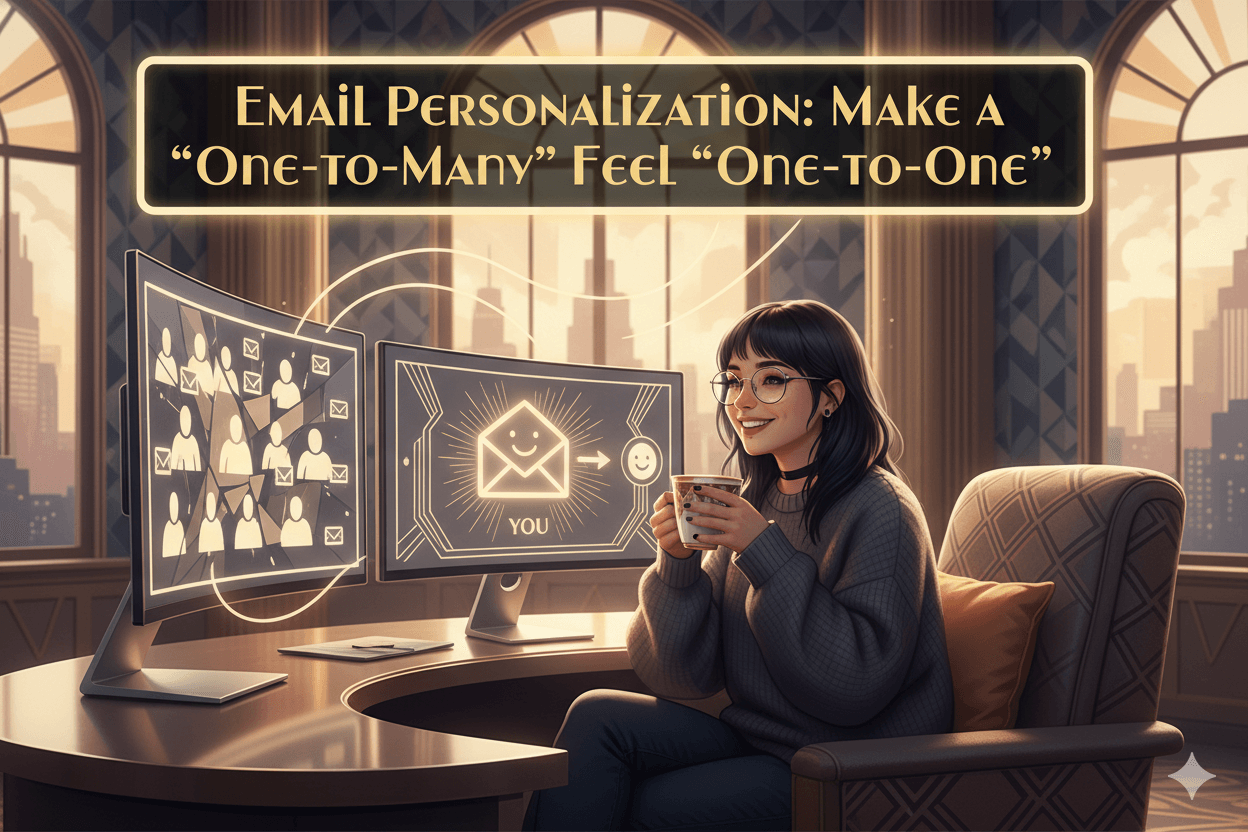Best Overall
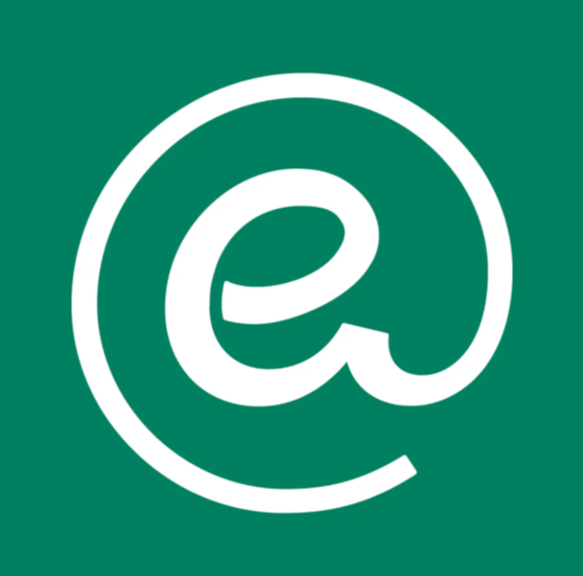
Tinyemail
The AI-powered email marketing tool that launches beautiful, high-converting campaigns in minutes with automation!
Best for Managers

Moosend
The fast, intuitive email marketing platform that automates campaigns, personalizes at scale, and turns data into ROI.
Best for Digital Marketers
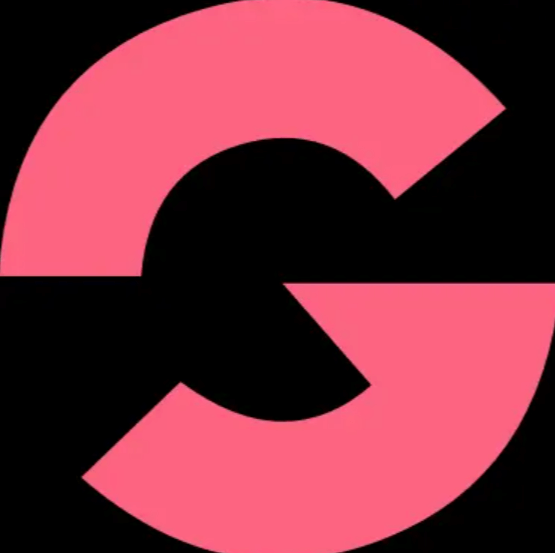
GrooveMail
An automation email marketing platform that launches high-converting campaigns, nurtures leads, and drives sales fast.
Best for B2B
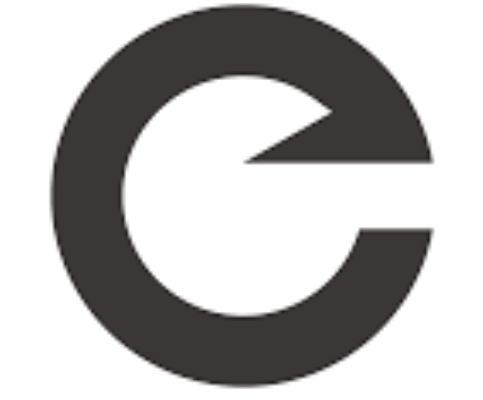
Encharge
Try this email platform; it automates the process of turning your messages into income while you focus on what you enjoy.
Friend to friend: a few links are affiliate links. When you purchase, I might get a tiny thank-you from the company, with zero added cost to you. I only recommend things that I’ve actually tried and looked into. Nothing here is financial advice; it is for entertainment. Read the full affiliate disclosure and privacy policy.
You don’t need a bigger ad budget… you need nearby people who join fast and visit soon. Set up QR signup and a 10-day welcome sprint in under 60 minutes. Track redemptions at the register and watch steady customers grow.
Recent industry surveys show strong returns on email programs, with many teams reporting double-digit ROI relative to spend. That power gets real for locals when signups happen in-store and messages focus on first visits, slow-day fills, and clear offers.
Start with a small promise: a coupon for first-time buyers, sent the moment someone joins. Then follow with three short reminders over ten days. Keep your send window simple at first.
Weekdays in mid-morning often perform well, but you will confirm with clicks and redemptions, not opens. Measure what matters: code redemptions at the register, replies, and repeat visits.
This article gives you the exact pieces: where to place a QR sign, what the form should say, a 10-day first-visit sequence, timing rules, and 2025 benchmark targets you can hit. You will leave with copy you can paste, a cadence you can keep, and proof points you can track in a single shift.
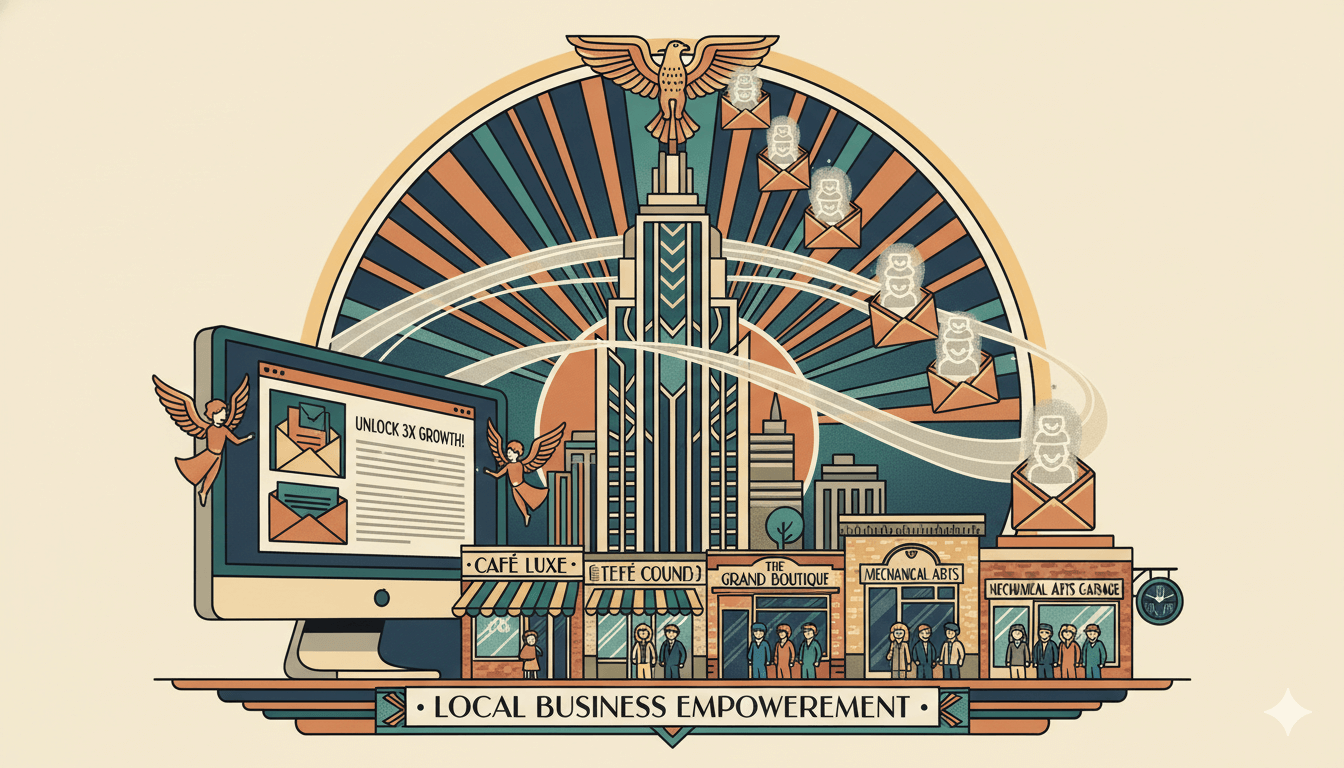
Why local email works in 2025
Email pays for itself when you capture nearby people and send useful, timed offers. Aim for clicks and redemptions you can count.
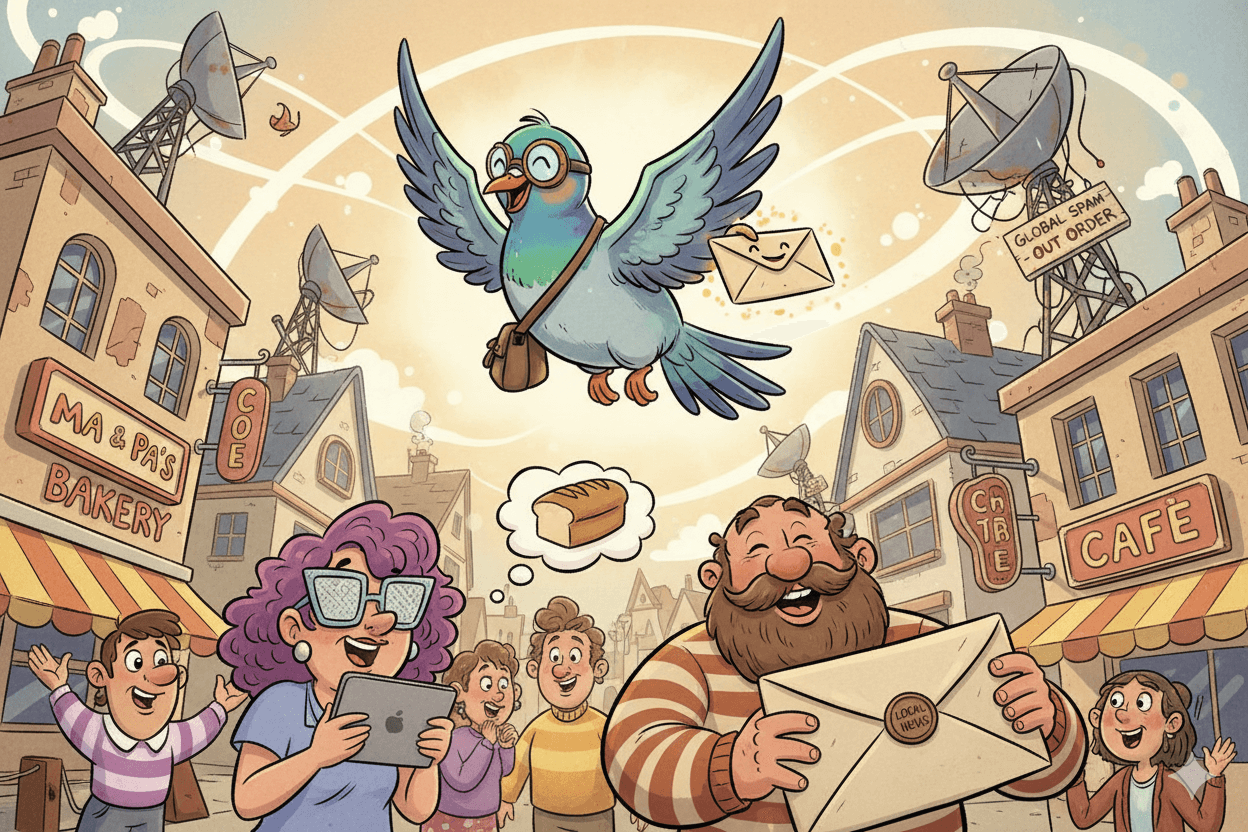
Real ROI in 2025
Independent industry surveys show email continuing to pay for itself many times over. Reported returns often land between about ten-to-one and thirty-six-to-one when teams track revenue against program costs.
That spread exists because lists, offers, and tracking differ, yet one truth holds: local businesses who capture signups at the counter and send useful, time-boxed offers see reliable lift they can measure by redemptions. Opens are noisy this year.
Benchmarks list higher averages than before, partly because privacy features auto-open or hide device details. Use opens as a rough trend, not a target.
Which metrics matter now
Clicks show intent. Start with a simple goal: CTR of 2–3% or higher on promos, and a CTOR around ~10% as a sanity check for creative quality. Then connect inbox to storefront. Put a short code in each promo, ask buyers to show the email, and log redemptions at checkout.
That gives you a clean loop: send → click → visit → sale. If CTR is soft, tighten the offer and subject line. If CTR is healthy but few redemptions happen, the in-store value or timing needs work.
Myth Buster: “Higher opens mean success.” Not necessarily in 2025. Count clicks and redemptions first; opens can mislead due to mailbox privacy changes.
Quick next step: Write a one-line goal for this month: “Hit CTR ≥2% and 25 redemptions from email.” Post it by the register, and track it daily.
Build your list in-store today (QR + POS + consent)
Put the signup where buyers stand. One QR, one field, clear consent… coupon arrives in a minute.
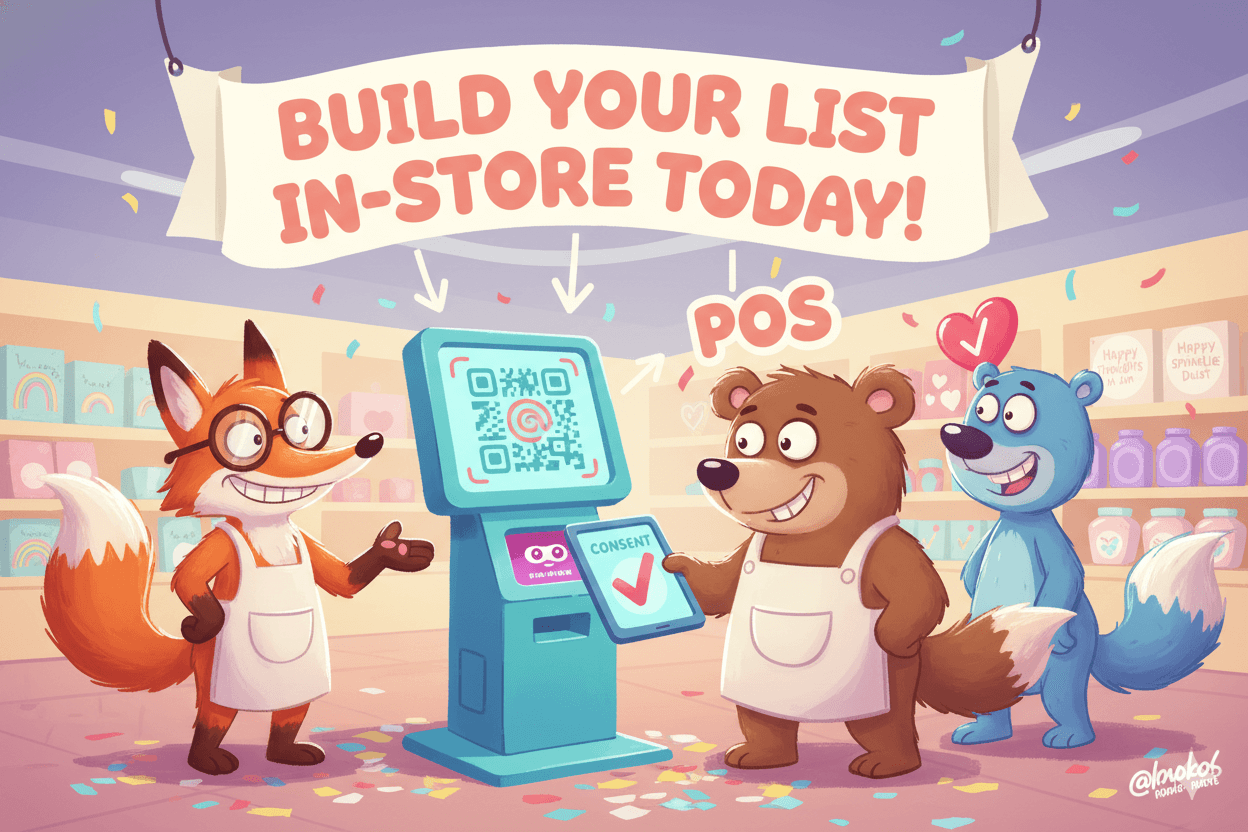
Where to place your QR
Use the spots with natural pauses. Put a 4–6 inch countertop placard at the register. Add a small window decal near eye level for passersby. If you serve food or services, print a QR on menus, service menus, or tent cards.
Put a QR and short code on receipts and takeaway bags for later signups.
Each QR should land on the same short URL, which auto-detects mobile and opens a minimal form. Rotate a single clear headline: “Join our neighborhood list for today’s offers.” Field test visibility at 3–6 feet and ensure good lighting.
Consent that keeps you safe
Tell people exactly what they get and how often. Above the button, use plain text such as: “By joining, you’ll get 1–2 emails per week with local deals. You can unsubscribe anytime.”
Collect only an email. Where laws apply, record timestamp and IP, and send a confirmation email (double opt-in) before delivering ongoing messages.
Always include your business name, physical address, and an unsubscribe link in every email you send. Keep a lightweight policy page behind the form for details.
Fast form flow
Friction kills signups. Use one field (email) and a single button. After submit, show a thank-you screen that: 1) confirms they’re in, 2) states when the welcome coupon will arrive, and 3) offers a “show this screen to redeem” fallback for same-day shoppers.
Trigger your Day 0 welcome email within 60 seconds so staff can honor it at the counter. Use unique short codes per campaign (“BAKERY15”) so redemption logs tie back to the QR source.
Review weekly: if signups are high but redemptions are low, tighten the incentive or move the QR to a higher-visibility spot.
The 10-day first-visit sprint (4 emails)
Four emails in ten days move a new subscriber to a first visit. Keep one offer, one code, one goal.
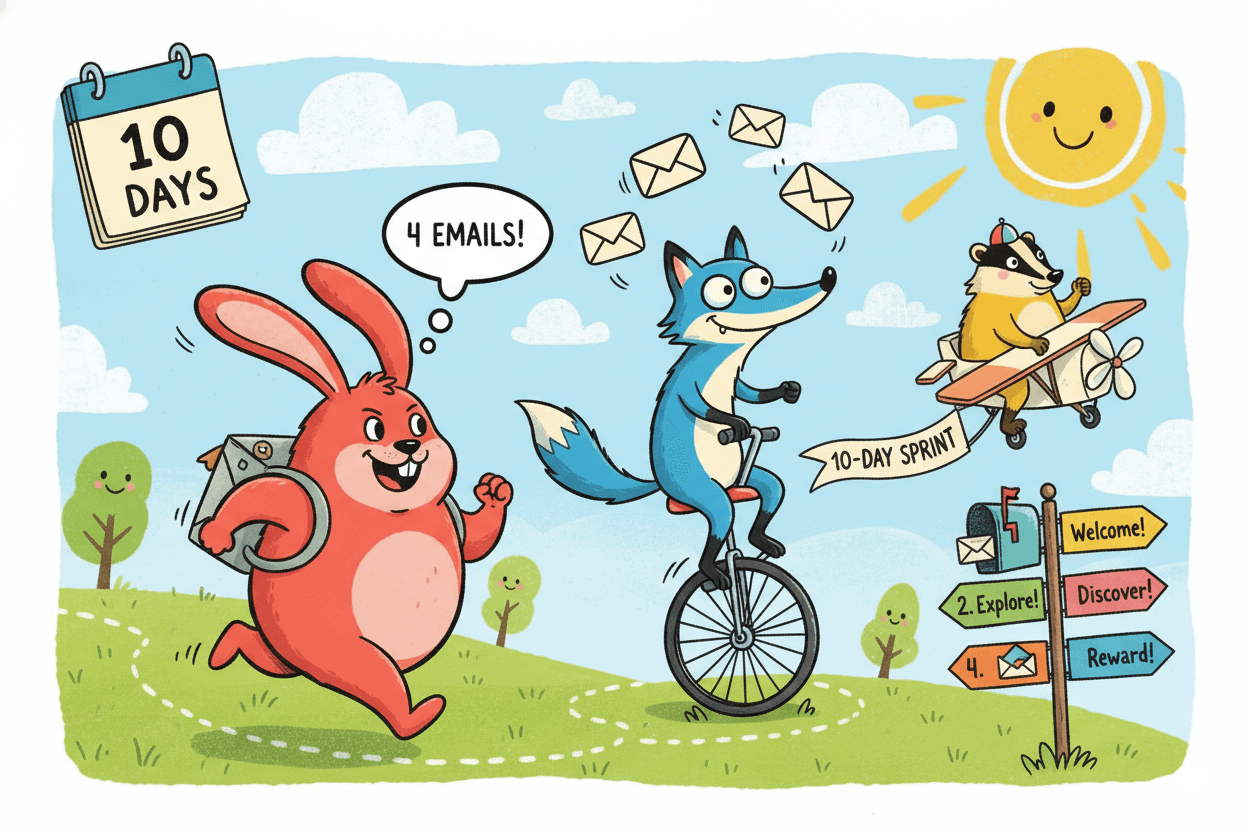
Day 0: Welcome + offer
Send within 60 seconds of signup. Subject: “Welcome, [Neighborhood]—show this for your first-visit treat.” Body: a single, unmistakable redeem code and clear terms (valid days, one per customer). Put the code in the first line, the button, and the footer.
Add a small “show this email to redeem” line for counter use. If you captured the source (e.g., “Counter QR”), log it with the redemption so you can see which placement works best.
Day 3: Social proof
Nudge with proof, not pressure. Subject: “What regulars love at [Your Place].” Share one short review or a photo of a best-seller. Restate the same redeem code and show the store hours for the next two days. Keep links minimal so the path to visit stays obvious.
Day 6–10: Reminder + last call
Two touches. First, a gentle reminder on Day 6: “Your first-visit perk is still waiting.” Final on Day 10: “Last chance for your welcome perk—ends tonight.” Keep copy tight. Repeat the code. Add a tiny FAQ block: payment types, parking, or seat times.
After Day 10, tag non-redeemers for a future “come by this week” special so you don’t waste the offer window.
pro_tip: Print a small “Email Welcome Perk” cheat sheet for staff with the code, rules, and how to log redemptions. A smooth handoff at the counter turns clicks into customers.
Slow-day specials and event emails
Fill quiet blocks with today-only offers and simple RSVPs. Send in the morning and track codes at checkout.
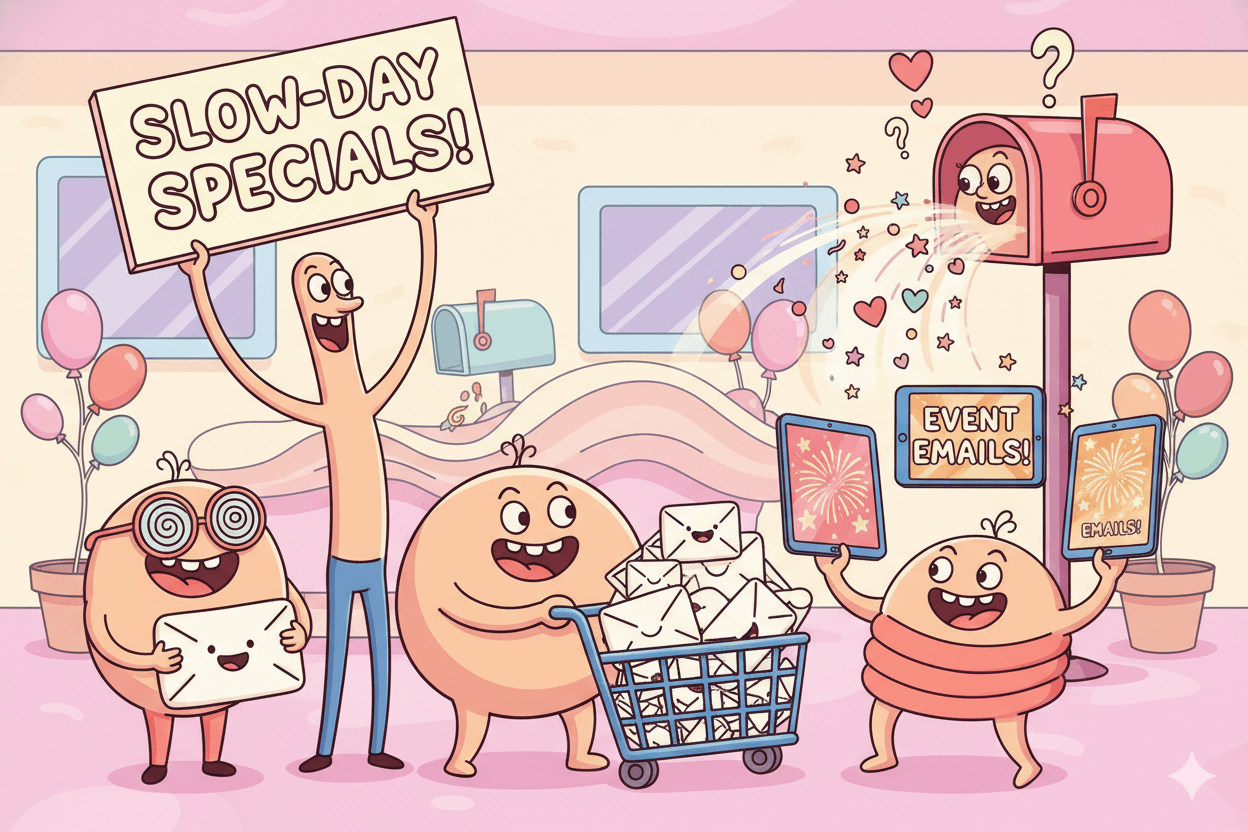
Weekly “slow-day” play
Choose a window that needs lift, like Tuesdays 2–5 p.m. Send the promo the same morning around 9–11 a.m. Start with a clear subject such as “[Neighborhood] Today 2–5 — show this for 15% off.” In the body, put the code in the first line and the button.
Add two lines of friction-killers: parking tip, payment types, or wait-time estimate. Keep the offer simple and the rules visible: one per customer, in-store only, valid today.
Rotate a theme each week (combo deal, add-on, sampler plate) and archive outcomes so you can reuse the top performers next month.
Neighborhood event invite
Not every send has to be a discount. Invite your list to a tasting night, mini-class, or sidewalk drop-in. Subject: “Thursday 6–8 — neighbors’ night at [Your Place].” Use one-tap RSVP. Cap attendance if space is tight. Include a tiny schedule, location pin, and accessibility note.
Offer a modest RSVP perk (free sample or early access) and make it redeemable by showing the email. Events build photos, reviews, and repeat visits that compound later offers.
Track redemptions at POS
Clicks are good. Visits are better. Train staff to ask for the email or code and tick a simple POS note like “EMAIL-TUE” at sale. Use different short codes for slow-day offers and events so reports are clean.
Review weekly: if opens are high but clicks are soft, adjust the subject line and preview text; if clicks are fine but redemptions lag, the value or time window misses the mark. Keep what moves seats, retire what doesn’t.
Quick Win: Print a small counter sign: “Show today’s email to redeem.” It prompts customers and helps staff remember to log the code.
Timing and frequency that work for small locals
Start with one weekly send, Tue–Thu mid-morning. Add a promo only after results appear.
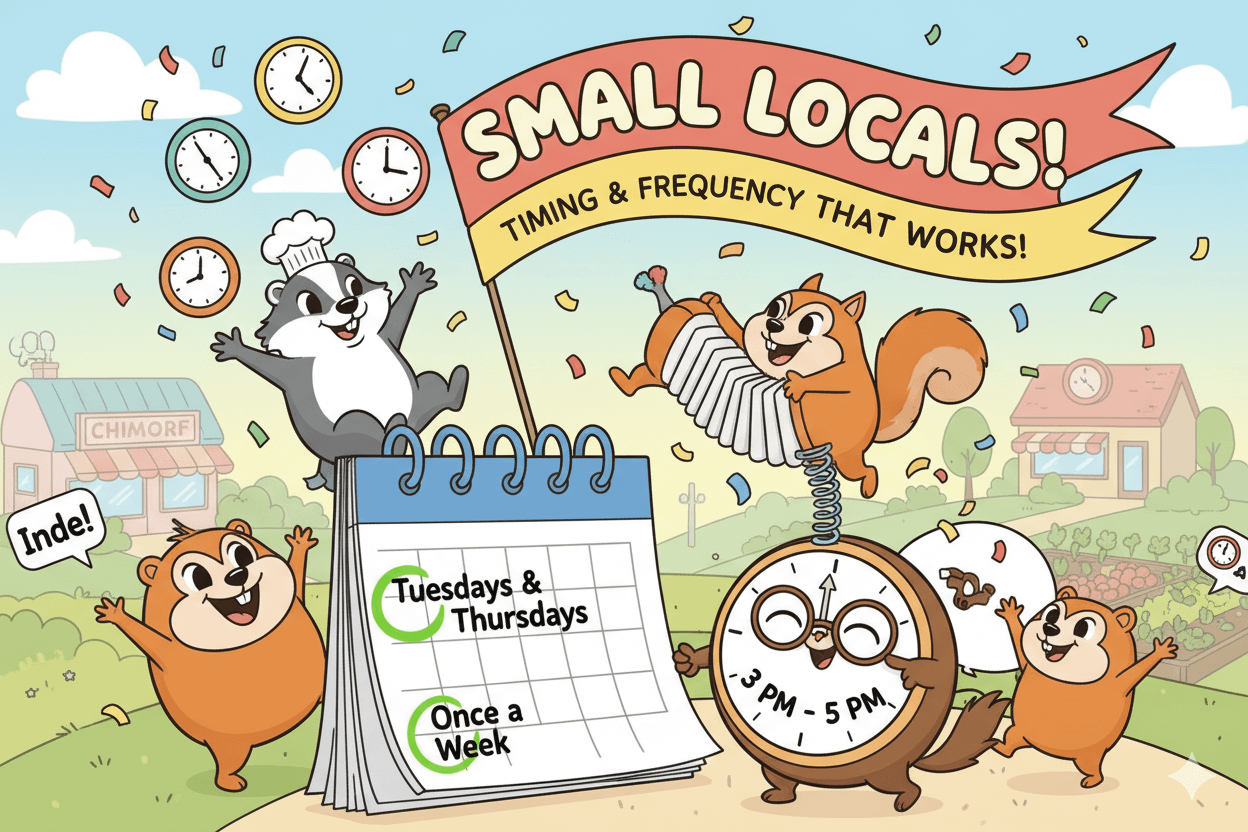
Best send windows
Weekdays win for most local lists. A practical starter window is 9–11 a.m. Tuesday through Thursday. People scan inboxes mid-morning between tasks, and your “swing by today” message feels timely.
Some shops also see lifts near 1–2 p.m. as lunch ends, or early evening when plans form.
Treat these as starting points, not doctrine. Watch CTR and same-day redemptions after each send. If the morning slot earns clicks but few redemptions, test a lunch or late-afternoon window with the same offer so timing is the only variable.
Weekly baseline vs promos
Hold a weekly baseline. One dependable send trains your audience and your team. Use it for neighborhood updates, small proofs, and a single clear offer. Layer promo sends sparingly: a second message on a chosen week for slow-day specials or events. Keep spacing sane.
If the baseline goes out Wednesday 10 a.m., aim the promo for Tuesday or Friday, not the same day. Guard against fatigue: if CTR drops two weeks in a row or unsubscribes blip, pause promos and refresh the offer.
Your north star is redeemed codes during the hours you wanted to fill.
do’s_and_don’ts
- Do keep one fixed weekly slot.
- Do time “today-only” offers to land same-day.
- Don’t stack two promos inside 24 hours unless you have an urgent, local reason.
Use send-time optimization
If your platform offers send-time optimization, turn it on after you’ve proven one baseline hour. STO looks at each subscriber’s open/click history and staggers delivery inside a window so more people see the message at their personal peak.
Use it as a refinement, not a crutch. Keep your offer and subject constant while testing STO so any lift is attributable. If STO improves CTR by even half a point and you see more redemptions in the target window, keep it.
If not, return to the fixed slot and test creative instead.
Benchmarks to watch in 2025
Use opens as a trend only. Set CTR ≥2%, CTOR ~10%, and count in-store redemptions.

Set a CTR goal
Clicks are the cleanest universal metric. For most small local lists, a practical target is CTR of 2–3% or higher on promo emails. If you’re below 2% for two sends in a row, tighten the offer, sharpen the subject line, and test a different send window.
If you’re above 3% but sales lag, your in-store value or timing likely needs work. Use unique short codes per campaign so you can attribute redemptions directly to a send.
Why opens are noisy
Open-rate averages look healthy this year. Several large datasets report ~42% overall, higher than pre-privacy years. Treat that as a trend line, not a goal. Mailbox privacy can auto-open emails or hide device behavior, which inflates numbers and masks issues.
A better creative quality check is CTOR (clicks divided by opens). Aim for ~10% CTOR as a baseline; rising CTOR usually means your subject + content match improves, even if opens wobble.
Measure redemptions and replies
What matters most for a neighborhood shop is whether people show up. Put the redeem code in the subject preview and body, ask customers to show the email at checkout, and log the code on the receipt.
Track three simple outcomes each week: CTR, redemptions, and revenue from redemptions.
Add replies to the list; questions and “do you have parking?” messages signal intent and surface friction you can fix in the next send.
Micro Challenge: This week, ship one promo with CTR ≥2%, CTOR ~10%, and 25 redemptions in the target window. If you miss one, adjust only one variable next week and try again.
| Metric | 2025 Starter Target | Notes |
|---|---|---|
| Open rate | ~42% (trend only) | Inflated by privacy; do not optimize to opens |
| CTR | 2–3%+ on promos | Primary success metric for small lists |
| CTOR | ~10% | Creative quality check (clicks ÷ opens) |
| In-store redemptions | Count at POS | Log short code on receipt; track revenue from redemptions |
Subject lines and offers that move neighbors
Lead with place, promise, and time: “Downtown lunch—show code for 15% off.” Keep it short and real.
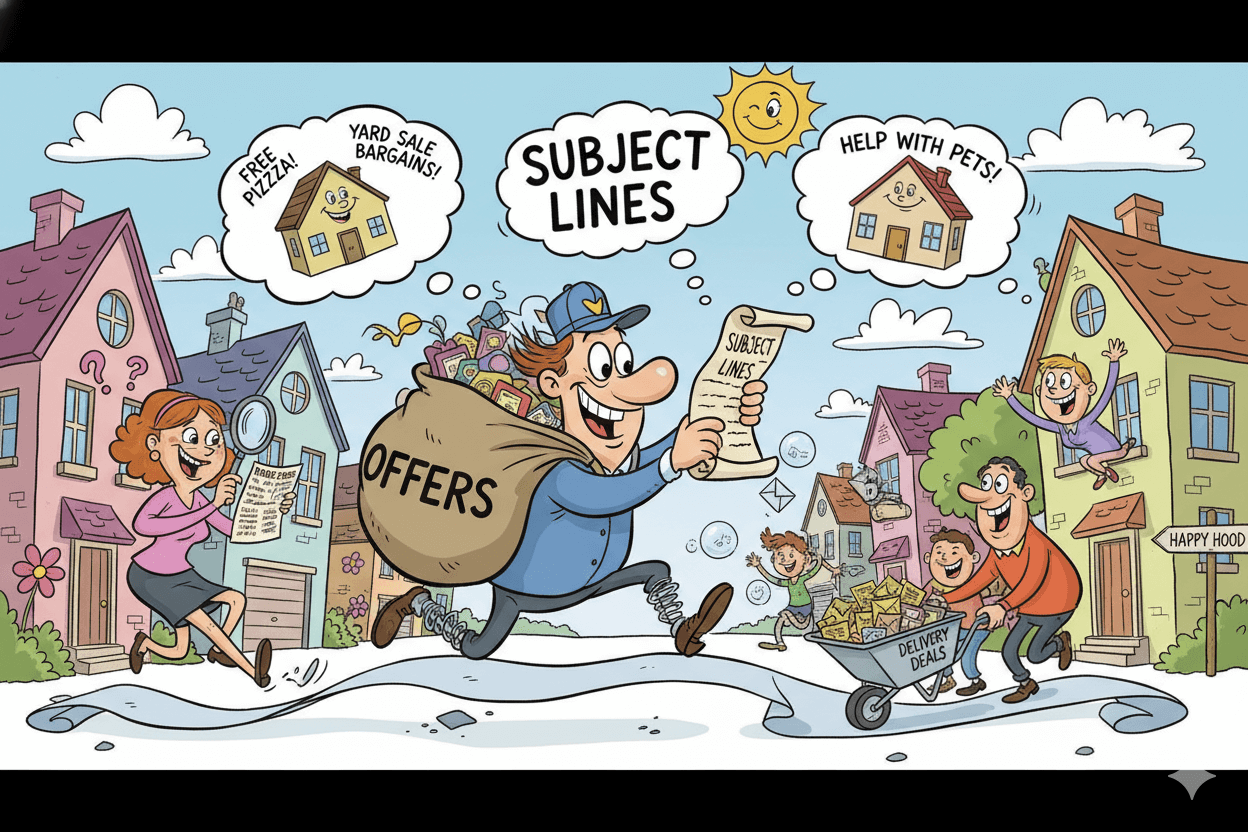
Neighborhood + offer
Name the area so it feels close: “Capitol Hill neighbors—free pastry with coffee today.” Pair one clear benefit with a known place. Keep to 6– nine words. In the preview text, add proof or detail: “Fresh at 8 a.m., while they last.”
Repeat the short code in the first line of the email and on the button.
If your list spans multiple districts, clone the send with each neighborhood tag so relevance stays high. Template: “[Neighborhood] friends — show code BAGEL10 for 10% off.”
Event + RSVP
Not every subject needs a discount. Invite people to something simple: “Thursday 6–8 — neighbors’ night at Oak & Vine.” Use the preview to name the draw: “Tastings + live acoustic set.” Inside, give a one-tap RSVP and cap attendance if needed.
Promise a small perk for RSVPs (sample, seat hold, early access) and make it redeemable by showing the email. Event subjects build photos, reviews, and chatter that boost later promos. Template: “Saturday 10–12 — latte art mini-class, 12 spots.”
Today-only special
Urgency works when it is honest and local. State the window and value: “Today 2–5 — show TACO-TUE for a free add-on.” Keep rules visible: one per customer, in-store only. Send mid-morning so people can plan. In the preview, remove doubts: “Street parking behind us.”
Inside the email, restate the time box, put the code in three places, and add a tiny FAQ. If you run this weekly, rotate the product and keep the code pattern consistent so staff logging stays clean.
pro_tip: Shorten subjects by cutting filler verbs. Lead with nouns and numbers: “Downtown lunch—BOGO bowls 11–2, code BOWL-11.”
Conclusion
You win when neighbors join, click, and walk in. Keep your system small and repeatable. Capture signups where people already stand. Send the welcome perk right away. Follow with three short reminders across ten days.
Hold a steady weekly slot, then test a second send when results appear. Measure clicks, click-to-open, and redemptions at the register. Simple beats complex.
Your first week can be live in one shift. Print a countertop QR. Add clear consent text and a one-field form. Load the Day 0 welcome email with a short code and plain terms.
Schedule Day 3 proof, Day 6 reminder, and Day 10 last call. Pick one slow day and schedule a today-only offer. Choose one mid-morning window to start and log outcomes with code names like EMAIL-WED-10.
Your first month is about rhythm. Keep one baseline send each week. Layer a promo only when the baseline performs. If CTR is under 2 percent for two sends, tighten the subject and value.
If CTR is healthy but few redemptions happen, adjust the time window or the in-store perk. Save what works in a simple playbook so any teammate can run it.
When you can predict walk-ins, growth compounds. The list gets warmer. Reviews improve. Slow blocks fill. Keep the promises small, the copy clear, and the tracking visible. Set one goal each week, review it every Friday, and ship again Monday.
That is how local email brings three times more customers, one code at a time.

Moosend: Turn Subscribers into Superfans

GrooveMail: Turn Subscribers into Superfans

Encharge: Turn Subscribers into Superfans


